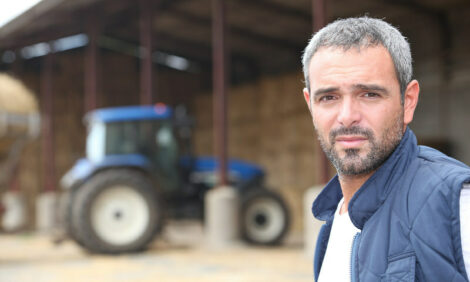



Red Meat Production Falls
CANADA - Jim Long's Weekly Pork Commentary this week looks at the fall in USDA estimated red meat production (beef, lamb, pork) to 887 million lbs. That is a whopping 60 million fewer lbs than the same week a year ago. This is a sharp departure from business as usual. Jim Long President, Baconmaker Genetics / Wood Lynn Farms, Inc. |
Year-to-date, total red meat production is only half of 1% lower than a year ago.
U.S. cattle and beef prices have hit record highs. They are 40 cents/lb higher than a year ago. Hog prices are being tugged along in the slipstream of cattle prices. On Friday, hog prices were 8 cents/lb higher than year ago despite last week's pork production being 3% higher than a year ago.
It is reasonable to expect fewer hogs over the next few weeks than year ago. That would give hog prices forward inertia of their own. Supply appears current. USDA estimated hog weights at 264 last week, the same as a year ago.
Both cattle and hog slaughter numbers should be significantly year-over-year lower the next few weeks. Huge red meat decreases like the past week of 60 million lbs (-7%) will do more than just reduce meat storage levels. As consumers can purchase 2.5 lbs of pork for the same money it takes to buy 1 lb of beef, we expect the beef:pork ratio will narrow and pork prices will increase. Prices ration limited supply.
U.S. Corn Crop Largest Ever
Friday USDA released a corn production estimate of 10.2 billion bushels, the largest U.S. yearly corn production on record. For perspective, last year's corn production was 9 billion bushels. This year's 1.2 billion bushel year-over-year increase will go a long way toward keeping feed costs restrained.
Soybean production was lowered for the U.S. but Brazil's has increased. For the first time ever, Brazil will export more soybeans than the U.S.. Ending world soybean stocks are projected to be higher than the previous year.
In the near term we see little change in total feed costs. We expect lower cattle and hog numbers will keep feed demand moderated.
What Happens When The Dog Hits The End Of The Chain
Three years ago Charlie McVean, founder and President of McVean Trading in Memphis, told us that slaughter cattle would reach $1.00/lb. At the time, cattle were trading under 60 cents/lb. To say that Charlie was projecting way beyond the consensus of the time would be a huge understatement.
But unlike the university professors who propagate volumes of drivel, Charlie puts his own coin in the game. His theory was sound. In a nutshell, it was this:
Massive levels of equity loss would continually drain production capacity out of the cattle industry. This on-going liquidation would eventually lead to what he aptly termed "when the dog hits the end of the chain"---the time when the production of slaughter cattle gets so low that demand would drive prices to $1.00/lb.
This week cattle traded up to $1.07/lb. Congratulations, Charlie. You saw the future. It takes courage and vision being way out in front.
For the swine industry, the cattle scenario creates optimism. Not only are cattle prices supporting pork prices. It is not a reach to envision that what took place in cattle will take place in the hog industry: Billions of dollars lost in the swine industry will lower production to levels that will trigger a huge price rally. It can happen. Did in cattle.
We see the cattle price 40 cents/lb higher than a year ago. That's $500/head more on a 1250-lb steer. The year-over-year U.S. cattle cash flow difference is plus-$300 million/week. That pays a lot of bills. It puts equity back in the business. We expect the same scenario in hogs because the dog will hit the end of the chain.
| Published with permission from |
Information provided by |
Source: Jim Long, www.baconmaker.com. Reproduced courtesy Farms.com - 14th October 2003








